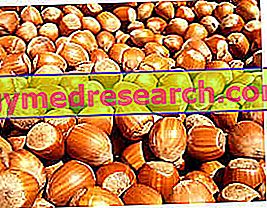What is Manganese
Manganese is an essential mineral, present in the human body between 12 and 20mg; the total content is distributed mainly in the bones, liver, pancreas and kidneys.
Functions
Manganese has many metabolic functions, among which we mention:
- Enzymatic activator
- Metal-enzymatic constituent of:
- Arginase, which subdivides the amino acid arginine into L-ornithine and urea
- Pyruvate carboxylase, a molecule involved in gluconeogenesis
- Glutamine synthetase, amino acid glutamine catalyst (starting from glutamate)
- Mitochondrial superoxide dismutase, as an antioxidant of the superoxide ion
Metabolism
Blood manganese concentrations are reduced and bound to transferrin; urinary excretion, although it increases with increasing food dose, is not the main route of elimination, which is instead made up of bile (digestive juice produced by the liver and poured into the intestine).

Deficiency and Excess
In man the real effects of manganese deficiency have not been identified, but in the animal there are: decreased reproductive capacity, growth retardation, impaired cartilage and bone formation, defects in carbohydrate and lipid metabolism (with a reduced glucose tolerance and reduced insulin secretion), hypercholesterolemia and fatty liver and kidney steatosis. Side effects of toxicity do not occur in humans (up to 9 mg / day).
Manganese: in Foods
The main food sources of manganese are cereals and their derivatives, wine and tea; legumes, potatoes, hazelnuts, egg yolk and cocoa are less important but still useful for achieving the minimum rations.
It is paradoxical to note how raw foods bring significant amounts of manganese but, also increasing fiber and phytates, compromise absorption.
Requirement and Recommended Recruitment
The recommended rations of manganese are still being studied; its average intake in the Italian diet is around 2-3 mg / day and seems to be sufficient (as well as not excessive) to maintain its essential functions.
The minimum daily requirement of manganese is estimated at around 0.74 mg / day, although the hyper-activity of the mangano-enzymes, such as superoxide dismutase in alcoholism, may need to be supplemented.
The Recommended Intake Levels of Nutrients for the Italian Population (LARN) propose an intake range between 1 and 10 mg / day (1-2 mg / day in children).
Bibliography:
- The molecular basis of nutrition. Second edition - G. Arienti - Piccin - pag 526
- Eat for the eyes. Eye and nutrition - L. Buratto - Springer - page 56
- Nutrition lessons - M. Ripart - New techniques - page 88
- Minerals - P. Hopfenzitz - L'erone Editrice - pag. 32-33
- Recommended Intake Levels of Nutrients for the Italian Population (LARN) - Italian Society of Human Nutrition (SINU).



